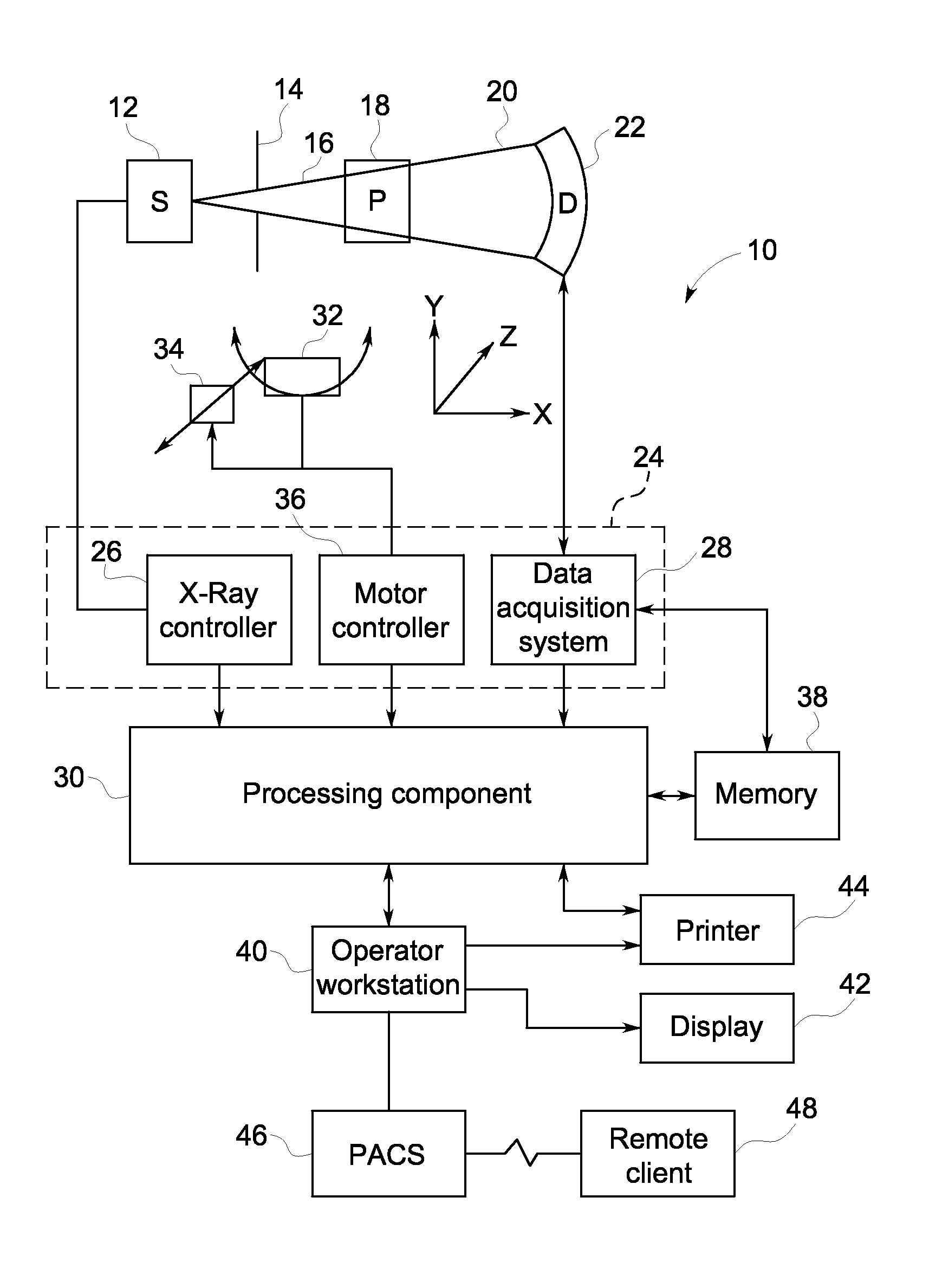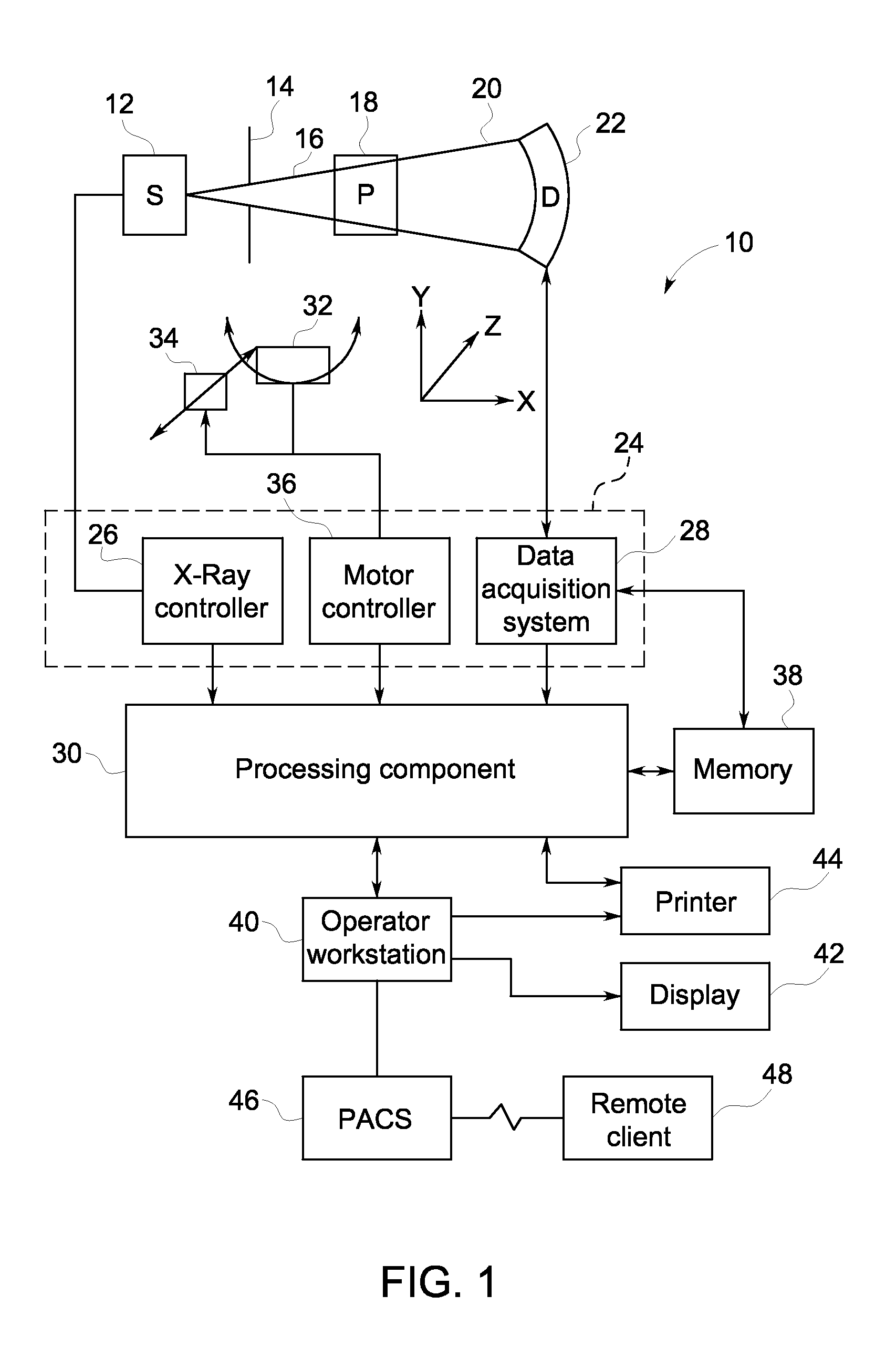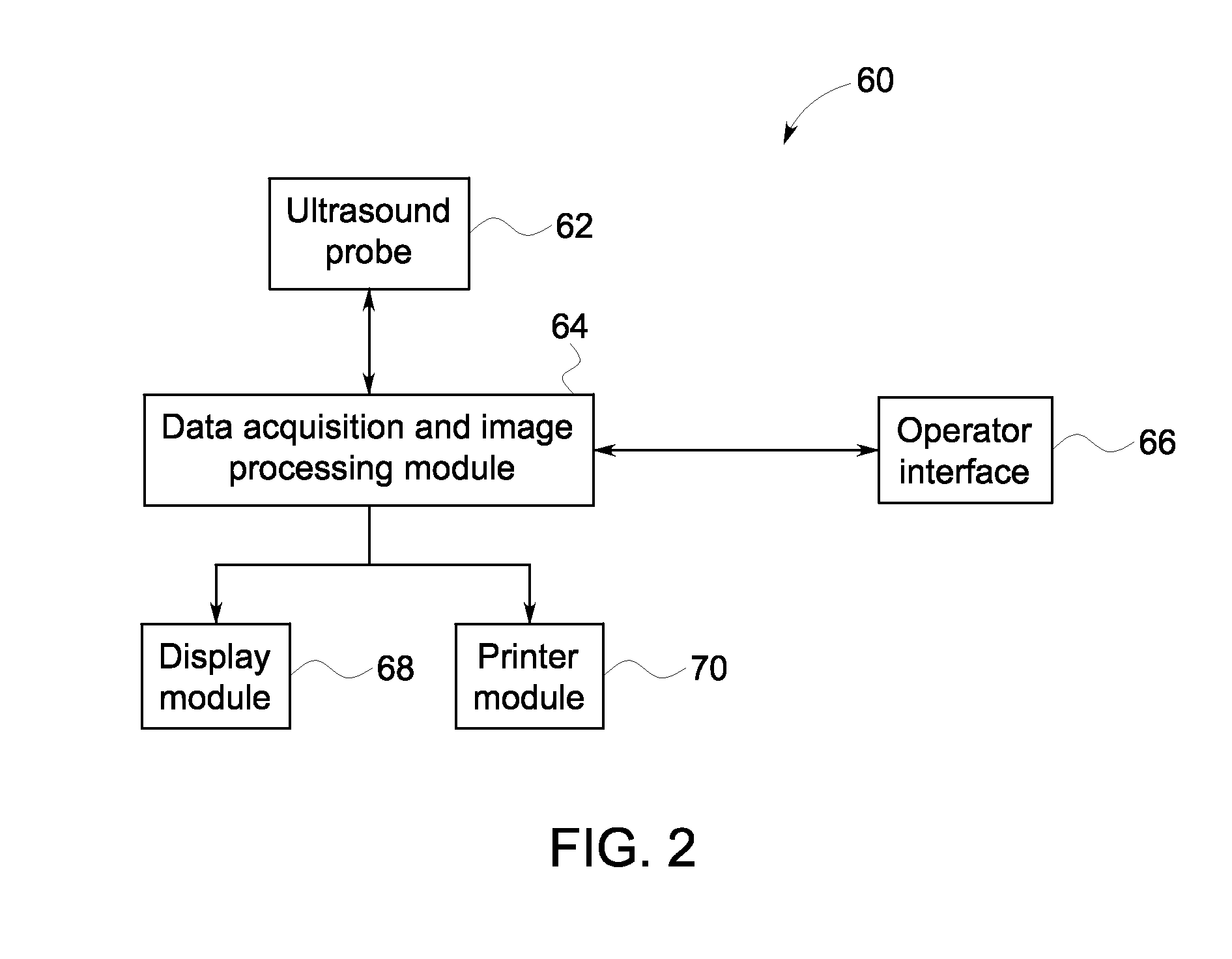Fractional flow reserve estimation
a fractional flow and reserve estimation technology, applied in the field of fractional flow reserve estimation, can solve the problems of low accuracy, low accuracy, and low accuracy, and achieve the effect of improving accuracy, reducing the positive and reducing the negative predictive value of ccta
- Summary
- Abstract
- Description
- Claims
- Application Information
AI Technical Summary
Problems solved by technology
Method used
Image
Examples
Embodiment Construction
[0017]Development of a non-invasive method to assess coronary anatomy and associated per territory evaluation of myocardial tissue function may be a useful tool in providing cardiac healthcare. Such a non-invasive approach may provide reduced patient morbidity / mortality due to the elimination of unnecessary interventional procedures as well as a reducing healthcare costs for cardiac care. With this in mind the present approach provides a non-invasive methodology for both anatomical and functional assessment of cardiac hemodynamics. One embodiment of the present approach utilizes the anatomical information provided by Coronary Computed Tomography Angiography (CCTA) and estimation of coronary blood flow by ultrasound as input to a computational fluid dynamics (CFD) model. Though CT approaches are discussed herein, the present approaches may also be implemented using anatomical data measured and derived using other suitable imaging modalities, such as magnetic resonance imaging (MRI) o...
PUM
 Login to View More
Login to View More Abstract
Description
Claims
Application Information
 Login to View More
Login to View More - R&D
- Intellectual Property
- Life Sciences
- Materials
- Tech Scout
- Unparalleled Data Quality
- Higher Quality Content
- 60% Fewer Hallucinations
Browse by: Latest US Patents, China's latest patents, Technical Efficacy Thesaurus, Application Domain, Technology Topic, Popular Technical Reports.
© 2025 PatSnap. All rights reserved.Legal|Privacy policy|Modern Slavery Act Transparency Statement|Sitemap|About US| Contact US: help@patsnap.com



